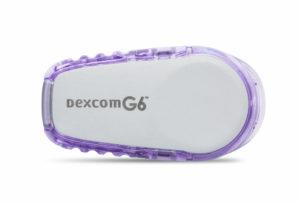 New data from Dexcom adds to the proof that wearable diabetes technology, is not costly considering the improvements it brings to quality of life and improved HbA1c.
New data from Dexcom adds to the proof that wearable diabetes technology, is not costly considering the improvements it brings to quality of life and improved HbA1c.
A report — Long-term cost-effectiveness of Dexcom G6 real-time continuous glucose monitoring versus self-monitoring of blood glucose in patients with Type 1 diabetes in the UK, has been recently published in the journal Diabetes Care.
The long-term health economic analysis was undertaken to establish the cost effectiveness of Dexcom’s G6 CGM sensor. The findings presented provide UK-based payers (including self-funders and CCGs) as well as policymakers (hopefully MPs and higher-ups in the NHS) with valuable information relating to the cost effectiveness of this technology. Those resistant to it might now start to understand the long-term value, and not just Long-term health economic analyses suggest that CGM improves glycaemic control and reduces the risk of long-term diabetes-related complications. For patients in the UK with T1D, the G6 CGM device is associated with significant improvements in clinical outcomes and, over patient lifetimes, is a cost-effective disease management option relative to SMBG.
The cost-effectiveness of Dexcom G6 included capturing the ‘quality of life’ benefits associated with people with diabetes having a reduced fear of hypos, therefore being able to achieve greater control, as well as calming those who fear (and therefore do not engage with) finger-pricking to get blood tests. Also shown was the overall improvement of HbA1c benefit associated with continued CGM use.
Peter Lynch, vice president of global access at Dexcom, commented on the results saying, “The results of the UK Dexcom G6 cost effectiveness analysis, clearly demonstrates that CGM is not only good value for money but also a highly cost-effective intervention for people with uncontrolled diabetes. This publication provides NICE with a robust economic analysis that along with our extensive clinical evidence should enable them to produce a Technology Appraisal on the Dexcom G6. This will support NNS England in providing equal access to CGM, reducing the inconsistent prescribing that is currently seen.”
Quality of life
Dexcom is one of four industry partners (the others being Abbott, Insulet and Roche) in the Pathway to Choice programme led by Type 1 diabetes charity JDRF. The first Pathway to Choice report, launched in February 2020, revealed that 83% of people affected by Type 1 diabetes would like to use continuous glucose monitoring through the NHS, but there are clear barriers to access.
Says Karen Addington, CEO of JDRF UK “We created the Pathway to Choice partnership to build awareness and access to Type 1 technology choices for people with Type 1 diabetes. Greater choice around wearable technologies could make a real difference to people living with this relentless and demanding condition.”
Based on the fear of hypoglycaemia criterion alone, it is estimated that up to 25% of patients with T1D may be eligible for Dexcom G6. Similarly, it is estimated that up to 70% of people with T1D in England and Wales may be eligible for Dexcom G6.
“Despite the guidance issued by NICE, funding for Dexcom G6 is not universally available,” continues Lynch. “In one recent study in patients and caregivers, 23% of Dexcom G6 users reported only partial NHS funding while 26% were wholly self-funded. This inequity in funding suggests the initial acquisition cost of Dexcom G6 may be a barrier to widespread adoption of its use.”
 Long-term health economic analyses suggest that Dexcom G6 improves glycaemic control and reduces the risk for long-term diabetes-related complications. This represents a cost-effective management option, particularly for patients meeting the NICE eligibility criteria for Dexcom G6. Additionally, with increased need for remote healthcare and the decreased resources of our GPs during the pandemic, this technology can allow for remote support of patients by doctors who may well be working from their own homes. During the height of the lockdown, people with T1D were three times more likely to die from Covid-19. Digitisation helps relieve pressure on hospitals, staff and patients as it allows for remote treatment, and greater accuracy since remote treatments are often smart, electronic devices.
Long-term health economic analyses suggest that Dexcom G6 improves glycaemic control and reduces the risk for long-term diabetes-related complications. This represents a cost-effective management option, particularly for patients meeting the NICE eligibility criteria for Dexcom G6. Additionally, with increased need for remote healthcare and the decreased resources of our GPs during the pandemic, this technology can allow for remote support of patients by doctors who may well be working from their own homes. During the height of the lockdown, people with T1D were three times more likely to die from Covid-19. Digitisation helps relieve pressure on hospitals, staff and patients as it allows for remote treatment, and greater accuracy since remote treatments are often smart, electronic devices.
Says Lynch, “Dexcom is on a mission to start a national conversation about the impact of diabetes as a long-term condition and how it can be managed better on a daily basis through support and technology.”
www.dexcom.com/en-GB
* The study was supported by Dexcom.



